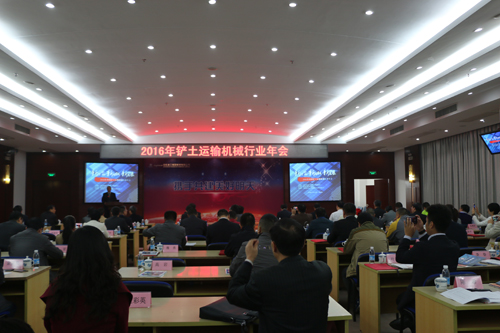New developments and trends in Africa infrastructure policy
Into Africa
Africa can be divided into five regions: North, East, West, South and central africa. The latest trends in the area of Africa since 2016 2015 and infrastructure policies under the order described
(a) Eastern Africa
1 transportation infrastructure construction policy
Regional level. In July 2015, Kenya and other countries signed a total investment of more than $20 billion in “ Lamu port - South Sultan - Ethiopia Corridor Transportation Project ” (LAPSSET) memorandum on the project planning and development prospects to reach an understanding. In August, Rwanda, Tanzania and Burundi three countries agreed to build Tanzania Dar Es Salaam - Kigali - Tanzania / Rwanda Ithaca Kaiser Burundi's pine gardy railway project, and decided to adopt a public-private partnership (PPP) mode of implementation. The same month, Kenya and Uganda reached a formal agreement for the construction of oil pipeline (from Kenya north to port Rahm). In September, Kenya and South Sultan government started cross-border cable cooperation, Rwanda, Uganda, Kenya plans to build a standard gauge railway projects connecting three railway, the preliminary feasibility report is expected to be completed in the near future, the only section of Rwanda will require at least $1 billion 700 million.
National level. Ethiopia second "growth and transformation plan" to the railway as a priority development projects (two major railway projects which will connect the northern Ethiopia, northeast of Djibouti and Hong Kong). Tanzania April 2016 revised national infrastructure plan to railway construction in the first place, the 2016/2017 fiscal year plan allocated $500 million for construction of 2561 km central standard gauge railway (Tanzania cooperative construction) investment, set aside $157 million for highway construction and maintenance (the capital of Dodoma City, the construction of 6 priority) new Road and the overpass and the expansion and upgrading of the port city in Dar Es Salaam, expected to become the hub of East Africa tanzania.
2 electricity and telecommunications infrastructure policies
Regional level. According to the Kenya Department of energy in August 2015 news release, Tanzania, Uganda, Rwanda, Kenya and Ethiopia five has developed east interconnected power network construction plan, to ensure energy supply, to ease the power crisis in East africa. national level. Second "growth and transformation plan" Ethiopia plans to add 14561 megawatts of renewable energy in the next five years, the hydropower, wind power and geothermal power increased from the current 2200MW to 17346MW (including hydropower accounted for 77%, 2017) will build 3 100MW solar photovoltaic power station, is also planning a new transmission the power line coverage rate from the current 55% to 90%, to become the main power of Ethiopia East African exporters, a total investment of US $30 billion.
Tanzania plans to invest $1 billion 200 million in utilities within 10 years, generating capacity from the current 1400MW to 2025 of 10, 000MW, which 2015/2016 fiscal year will carry out the construction of 240 MW power station, the high voltage transmission line and the Northeast power grid transmission line of the three major power facilities and the construction of natural gas power station in the world by the year of.
Kenya plans to invest $130 million in rural areas to upgrade the maintenance of power facilities. In the August 2015 announced a series of coastal areas project construction plan, will invest 150 million dollars to build a geothermal power station to Mombasa Olkaria transmission line project; announced in September second grid expansion plan, intends to use nuclear power into energy planning, so that Kenya can play a major role in the nuclear power source structure, the first 1 million kilowatts of nuclear plans power station launched in 2025 2033 to reach 4 million kilowatts of nuclear power. In addition, plans to 2017, the realization of geothermal energy and other renewable energy installed capacity from the current 2500 MW to 6700 mw.
Uganda is also preparing to build hydropower generating capacity of 600 mw. In addition, the telecommunications sector, Kenya in its newly issued regulations, requiring telecom operators to share 30% of the new ICT (information and communication technology) infrastructure.
(two) Central Africa
1 transportation infrastructure construction policy
Regional level. In March 2015, the Central African transport corridor interconnection project promotion agency, a regional official institutions from Burundi, Uganda, Rwanda, Tanzania and Congo (DRC) five member determining will implement 22 interconnection infrastructure projects, including iron Lu Weixiu, port modernization, highway maintenance etc.. In September, Congo (DRC) officially joined the North African integration Corridor project organization, and signed a number of agreements, including the standardization of railway project will connect the northern and central corridor, just hope the government and other members of a joint development of more integration projects, promote all-round development and cooperation between regions.
National level. In October 2015, Cameroon launched three railway construction project feasibility study (part of the national railway development plan), a total of about 15 trillion of the total investment in illegal Lang. In addition, Congo (Brazzaville) of Pointe Noire has recently been transformed into the most advanced areas in non terminal infrastructure projects being implemented (National Highway and railway repair projects, such as the country to the hinterland of the ocean railway modernization project etc.) will further enhance the transfer of the goods at the port of Pointe Noire's position.
2 electricity and telecommunications infrastructure policies
Regional level. According to the Central African energy organization plan in September 2015, will implement the 15 priority power project in the next 15 years (with hydropower), the formation of power transmission channel to the north and south, the 10 Central African economic community members generally benefit, promote the regional integration process.
National level. In August 2015, Congo (DRC) announced that it will start a new batch of infrastructure projects in two provinces in the East and West, which includes 60 small water supply network, 60 schools and 60 health centres (the African Development Bank has pledged to Kasai infrastructure projects to provide financial support). In November, Congo (Brazzaville) to start a privatization plan cost 3 billion euros, including hydropower in 6 areas including 46 enterprises (implemented PPP model), but is not completely privatized, about 70%-80% of the shares for the opening of the market, and about 20% of the shares of enterprises will be retained.
(three) Southern Africa
1 transportation infrastructure policy
Namibia plans to invest 223 billion yuan in infrastructure from to 2020, half of which into the transportation sector, 1/4 into the field of construction.
April 2015, Namibia released the next three years, the development of infrastructure projects budget, a total of about $3 billion 500 million, mainly for new roads, highways and airport upgrades, residential projects.
In July, plans to oshikango near the border of Angola Industrial Park $7 million 100 thousand investment in the construction of container terminal, mainly for the export of goods to neighboring Angola.
In September, the Namibia Highway Bureau issued 2015 to 2018 development plan, announced that it will give priority to the development of transport infrastructure and maintenance in the maintenance and upgrade of existing road and new road network balance and development plan and the Na fourth countries and 2030 vision fit.
In December, the South African government issued infrastructure budget, plans to invest $55 billion 600 million for a period of three years on roads and railways, public transport, water and electricity and other infrastructure projects, of which about $18 billion 700 million will be allocated to transport projects. Mozambique plans to 2015 years from 2019 to the laying of 2100 km of roads, construction, maintenance and maintenance of the bridge to maintain a road of 20000 km, 57 km.
2 electricity and telecommunications infrastructure policies
Regional level. Southern African Development Community (SADC), 2015 renewable energy and energy efficiency status report, pointed out that from 2012 to 2027, SADC will invest $-2330 billion in the field of power generation.
National level. Namibia plans to invest 223 billion yuan in infrastructure from to 2020, of which 1/4 into the field of energy infrastructure.
(four) West Africa
1 transportation infrastructure policy
In December 2015, Nigeria issued the 2016 budget, mainly for the oil and gas industry reform and infrastructure construction, mainly in power generation and transmission, gas pipeline and railway network expansion and modernization.
2 electric power infrastructure construction policy
Regional level. In August 2015, Senegal and Guinea signed the "cooperation agreement" electric energy, 4 plan and Gambia river basin organization members (plus Gambia, Guinea Bissau) jointly developed a number of hydropower resources of cross-border projects, including the library, Sue A Pitt, Tang Ba Samba at three hydropower stations, 1700 km transmission project etc.. In addition, the Ivory Coast, Mali, Guinea and Senegal Shikoku power grid is also planning.
National level. In February 2015, Senegal plans to develop up to 200MW of Public Utility Solar projects. In November the establishment of National Renewable Energy Agency, to develop new energy policy to encourage the development of renewable energy: 2016 to 2019 310MW development of renewable energy (including wind power, solar 150MW, for the rest of 2017) renewable energy accounted for 20% of the total generating capacity of 392 remote villages, the development of solar power projects in 45 provinces, 50000 lamps installed solar energy lamp.
(five) northern Africa
1 transportation infrastructure policy
In March 2015, Egypt officially launched a new capital planning project (between Cairo and the Red Sea) to global investors and politicians. In August, Egypt officially opened the new Suez Canal area, along the canal project construction into an industrial, commercial and logistics center. September, Morocco and the French railway company said it would jointly set up high-speed rail technology institute, for the training of professional personnel.
Algeria plans to invest heavily from 2015 to 2019, including the construction of the highway, the construction of the dam, the construction of the 1600 km highway, the construction of the dam, and the transformation of the construction of the project will be started in 2016 with a total investment of $1 billion 890 million.
2 electricity and telecommunications infrastructure policies
Algeria plans to 2030 to build 60 gas, solar, wind and other contain different attributes of the energy power station, solar power generation reached 3% of the total generating capacity of 40%, domestic demand for electricity from renewable energy sources.
 Association of Beijing in the ...
Association of Beijing in the ...
 Contact:Miss Cheng
Contact:Miss Cheng Mobile:18975850701
Mobile:18975850701 Telephone:86-010-12345678
Telephone:86-010-12345678 Email:12345@qq.com
Email:12345@qq.com Address:Room 906, 8th Building Garden, XueYuan Road HaiDian District Beijing China
Address:Room 906, 8th Building Garden, XueYuan Road HaiDian District Beijing China 